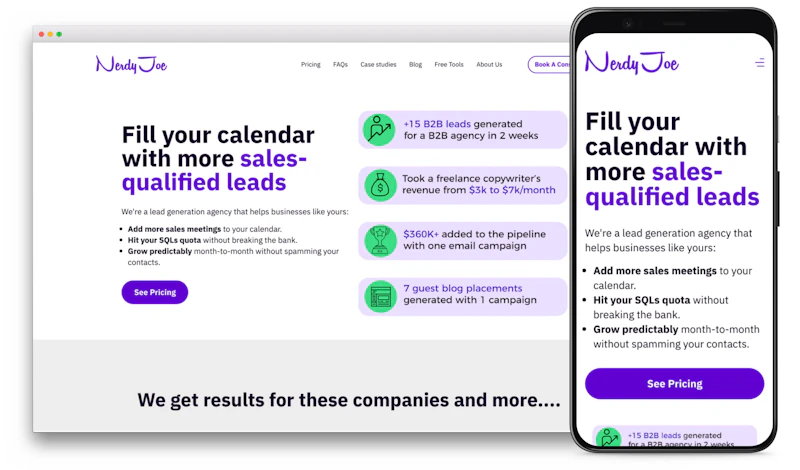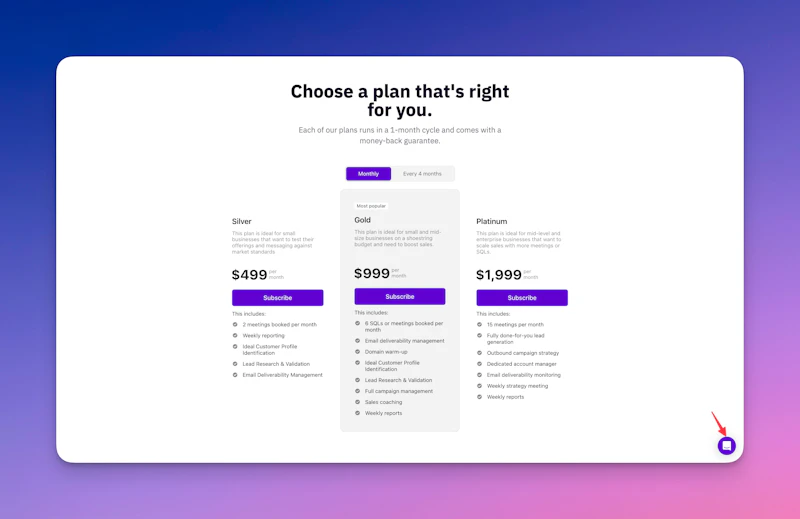Top 5 React Alternatives for Web Applications Development

Justin Ahinon
Last updated on
React has been a dominant force in the realm of JavaScript libraries for building interactive web interfaces. It has powered countless applications, delivering seamless, dynamic experiences to users worldwide.
But like any technology, it's not a one-size-fits-all solution . There are instances where different tools might offer a better fit, or perhaps you're just intrigued to know what other tools exist in the wild outside the React ecosystem. That's where alternatives come into play.
Over the past years, a host of compelling alternatives to React have emerged, each bringing its unique approach to the table.
In my journey as a web developer and web agency owner, I've had the opportunity to explore some of these alternatives and have been quite impressed by what they offer. In this article, we're going to dive into some of the best React alternatives out there, examining their strengths, weaknesses, and everything in between.
We'll also take a closer look at Svelte and SvelteKit , two technologies we've been leveraging at Okupter to build robust web applications . Let's embark on this exploration together!
Understanding the Need for React Alternatives
React has been my go-to for quite some time, and let's be honest, it's pretty great. It's got JSX and components, and let's not forget about the robust ecosystem and community support surrounding it. But, as I've journeyed through different projects and codebases, I've realized that React, despite its strengths, isn't always the best fit for every scenario.
First, React's learning curve can be steep , particularly for beginners. It introduces its own syntax (JSX), concepts like virtual DOM, and hooks, which can be quite a handful for newcomers to web development.
Then, there's the size. For smaller projects or performance-critical applications, React might feel a bit overweight . There are lighter frameworks out there that can deliver similar capabilities with a fraction of the footprint.
Let's also talk about verbosity. Sometimes, you might find yourself writing more code than necessary for certain operations in React. There are alternatives that champion a more concise, less boilerplate approach.
Moreover, while React's flexibility is generally positive, the lack of clear conventions can sometimes lead to inconsistent coding practices across teams. I've seen projects where every component seemed to follow its own rules!
And lastly, (while it might seem a bit far-fetched), not everyone is a fan of Facebook, React's parent company, and their licensing policies, which in the past sparked some controversy.
During my time working on high-profile projects for the NBA and WNBA, I experienced firsthand the need for React alternatives. We were building highly interactive, performance-critical applications loaded with real-time data. Initially, React was on our radar (as we were using Next.js), but as we delved deeper into planning, we realized it might not be the optimal choice for our specific needs.
That's when Svelte came into the picture . Its 'disappearing framework' approach, which compiles code to efficient, imperative code that directly manipulates the DOM, was a game-changer. It allowed us to create highly responsive, quick-loading applications without the usual performance costs. This real-life scenario underlines the necessity of choosing the right tool for the job - sometimes , that might not be React.
Comparing React Alternatives
As we venture into the vibrant world of React alternatives, we'll be examining a few notable contenders:
Svelte
Vue.js
Angular
Preact
Ember.js .
Each has its unique strengths and potential challenges. Let's get started!
Svelte, the best alternative to React
First up, we have Svelte.
In contrast to traditional frameworks like React, Svelte is a radical new approach to building user interfaces . Instead of doing the heavy lifting in the browser, Svelte shifts that work into a compile step that happens when you build your app, resulting in highly performant JavaScript code. This innovative approach brings some impressive benefits, like faster load times, smoother transitions, and a more enjoyable developer experience.
Now, you may have heard about SvelteKit and wondered about it. What's the difference between Svelte and SvelteKit? In essence, SvelteKit is a meta-framework that builds on top of Svelte to provide additional features useful in building full-scale applications.
Read more about our comparison between Svelte and React here.
Why Svelte and SvelteKit stand out in the crowd
In the world of web development, there are many shiny tools to choose from, but Svelte and SvelteKit are the ones that truly stand out . Offering a radically different approach to building user interfaces, they deserve a closer look.
So, what makes Svelte unique? Unlike other JavaScript frameworks and libraries that do the bulk of their work in the browser, Svelte shifts that burden into a compile step that happens when you build your app .
Instead of using techniques like virtual DOM diffing, Svelte writes code that surgically updates the DOM when the state of your app changes. This results in highly optimized, high-performance code that leads to faster load times, smoother transitions, and overall more enjoyable user experiences .
Then we have SvelteKit , a powerful evolution of Svelte. But what exactly is the difference between Svelte and SvelteKit? Essentially, SvelteKit is a meta-framework that extends Svelte’s capabilities for building full-scale applications. You can see it as what Next.js is to React or Nuxt is to Vue.js.
It comes with additional features like routing, server-side rendering (SSR), and built-in adapters for various deployment platforms.
One area where SvelteKit shines is in building landing pages. Its compile-time approach and built-in SEO customization capabilities make it excellent for creating high-performance landing pages.
The resulting pages are not only fast, but they also perform smoothly, giving your visitors a delightful user experience.
To summarize, Svelte and SvelteKit are not just another set of tools in the JavaScript ecosystem. They represent a shift in how we think about and approach web development . They challenge the status quo, promising superior performance and developer experience. And given the growing community and ecosystem around these tools, they are not just a fad but a solid choice for modern web development.
Curious about why and how to use SvelteKit for landing pages?
Dive deeper into the topic in this article, and see how we put this theory into practice with our landing page services at Okupter .
How We Put Svelte and SvelteKit into Practice: NerdyJoe's Transformation
Our analysis of Svelte and SvelteKit wouldn't be complete without showcasing how these technologies can translate into real-world results. Let's take a brief look at one of our successful collaborations that hinged upon the power of Svelte and SvelteKit.
NerdyJoe, a lead generation agency, sought to elevate its online presence and enhance performance. We utilized SvelteKit and DatoCMS to transform NerdyJoe's website from a traditional WordPress site to a cutting-edge digital platform . The new site was not only faster and more flexible, but it also allowed seamless content updates.

A key component of this transformation was the creation of a high-converting landing page , where SvelteKit's efficiency and adaptability played a crucial role. The result was an effective lead-generation tool that contributed significantly to NerdyJoe's growth.
Additional services were integrated into the site for a holistic user experience, such as Stripe for seamless transactions and Intercom for prompt, personalized customer support .

The results of this project? An increase in lead generation from zero to dozens per month, nearing a $10K monthly recurring revenue , and enhanced site performance through prerendering key pages.
You can delve deeper into this case study here.
NerdyJoe's transformation illustrates how Svelte and SvelteKit can be effectively utilized in the real world to facilitate growth and improve digital experiences. It's an example of the kind of transformative work we're proud to do here at Okupter.
Get help with your Svelte or SvelteKit code
Got a Svelte/Sveltekit bug giving you headaches? I’ve been there!
Book a free 15 min consultation call, and I’ll review your code base and give you personalized feedback on your code.
P.S. If you have a bigger problem that may need more than 15 minutes, you can also pick my brain for a small fee. 😊 But that’s up to you!
Vue.js
Next, let's look at Vue.js. It’s a progressive JavaScript framework, so you can adopt its features incrementally. This makes it a popular choice among developers, particularly those transitioning from a more traditional web development background.
Vue has a similar component-based structure as React, but it includes several unique features like directives, mixins, and the option to use templates instead of JSX, which some developers find to be a more comfortable fit.
Vue generally performs well in terms of performance, though it's important to note that it doesn't offer the same compiler-based optimization you get with Svelte. While this likely won't be an issue for most applications, Svelte may offer an advantage for extremely performance-critical situations.
Moreover, Vue's developer experience is often praised. Its single-file components encapsulate HTML, CSS, and JavaScript in one file, making the codebase clean, manageable, and easy to understand.
Angular
Angular, backed by Google, is another robust alternative to React. Unlike other frameworks mentioned here, Angular is a full-featured framework right out of the box. This means it includes routing, state management, form handling, and more solutions, eliminating the need for third-party libraries.
Angular is built with TypeScript , bringing static types and interfaces to your JavaScript code, which can make code easier to reason about, refactor, and debug. However, this also means that you'll need to be comfortable with TypeScript and the unique concepts Angular introduces, like decorators and modules, which can create a steeper learning curve compared to Svelte or Vue.
Angular's comprehensive approach can be a boon for large-scale, complex applications. However, its heavy-duty nature could be a disadvantage for smaller, simpler projects, where a lighter and more flexible framework like Svelte might be more beneficial.
Preact
Preact is an exciting contender in the landscape of React alternatives. It prides itself on providing almost the same API as React but in just 3KB of size . Its small footprint makes it a highly attractive option for performance-critical situations or when your project needs to be extremely lightweight.
Preact offers out-of-the-box compatibility with many React libraries and comes with some built-in performance features like asynchronous rendering.
But when it comes to optimizing for maximum performance, it doesn't have the compile-time optimization of Svelte, which directly translates your code into highly efficient imperative code that updates the DOM.
Ember.js
Lastly, we have Ember.js. Ember is a highly opinionated framework offering a conventional, standardized way of building web applications. It's built for productivity and favors convention over configuration , reducing the need for decision-making and increasing developer velocity.
Ember has a strong focus on providing a complete out-of-the-box experience, delivering a comprehensive solution for routing, state management, and more. This makes it a suitable choice for large, ambitious applications.
However, Ember's convention-over-configuration philosophy may feel limiting to developers who appreciate the flexibility found in libraries like Svelte.
Furthermore, Ember's performance, while solid, may not match the speed and efficiency of a compile-to-JavaScript framework like Svelte for highly interactive interfaces.
Every tool has its strengths and challenges. Vue.js, Angular, Preact, and Ember.js are all excellent libraries and frameworks in their own right.
However, they each present a different trade-off between size, performance, flexibility, learning curve, and out-of-the-box functionality.
The key is understanding the needs of your project and choosing the tool that best aligns with those requirements. As we've seen, in many cases, that could very well be Svelte.
Choosing the Right React Alternative for You
Selecting the perfect alternative to React for your project isn't a decision to take lightly. It hinges on understanding your project's unique needs, your team's expertise, and the specific features each framework or library offers. There's no one-size-fits-all answer.
If you're comfortable in the confines of a virtual DOM, enjoy JSX syntax, and thrive in the context of a component lifecycle - React could serve you well. If your project needs an extensive ecosystem of libraries and tools, then React certainly holds its ground.
But, if you're searching for:
a solution that leans more into the future,
a framework that compiles down to efficient and minimal JavaScript,
or an option that frees you from the verbosity of JSX without sacrificing expressiveness,
then it's time you look into Svelte.
If you appreciate:
a smoother,
simplified developer experience,
or an architecture that promotes better performance out of the box
Svelte is calling your name .
If the idea of less client-side load, an easier reactivity model, or better control over animations appeals to you, Svelte has got you covered.
Ultimately, the choice is yours. But remember, the alternatives are out there. Why not give Svelte a spin ?
At the end of the day, remember that the best tool is the one that fits your project needs and enhances your team's productivity .
Experiment, evaluate, and find what works best for you. And should you need help in navigating these options, remember that Okupter is just a call away to guide you through your decision.
Why Okupter is the Best Svelte and SvelteKit Agency Out There
In a crowded web development landscape, Okupter is probably the only agency specializing entirely in Svelte and SvelteKit .
Now, you might think that this claim isn't a strong argument. Perhaps you're wondering, "Why does this matter? " Allow me to delve into the reasons.
You see, our decision to focus on Svelte and SvelteKit isn't just a business strategy . It's a commitment, passion, and recognition of these tools' exceptional capabilities. At Okupter, we're not just adopting a new shiny tool because it's trending, but we're utilizing technologies that we genuinely believe can offer substantial advantages to our clients.
Our specialization has allowed us to sharpen our skills, cultivate an in-depth understanding, and, more importantly, enable us to extract the full potential of these tools for your projects. We've worked with businesses and startups, transforming their visions into high-performing digital assets that fuel growth and success .
So, what makes us the best Svelte and SvelteKit agency out there isn't just our technical prowess. It's our commitment to driving your success, our passion for these innovative technologies, and our belief in providing solutions tailored to your unique needs. This, we believe, is what sets us apart in a sea of generalist agencies.
Remember, finding the right agency for your project isn't just about who can get the job done. It's about partnering with a team that understands your needs, aligns with your vision, and has the expertise to turn that vision into reality. We're excited to be that team for you.
We don't just work for you - we work with you, treating your successes as our own, and your challenges as ours to overcome.
Feel the need for a deeper discussion on how we can assist your business? Don't hesitate to schedule a free 15-min consulting call with us.
Get help with your Svelte or SvelteKit code
Got a Svelte/Sveltekit bug giving you headaches? I’ve been there!
Book a free 15 min consultation call, and I’ll review your code base and give you personalized feedback on your code.
P.S. If you have a bigger problem that may need more than 15 minutes, you can also pick my brain for a small fee. 😊 But that’s up to you!
While React has emerged as a leading framework for building web applications, it doesn't necessarily suit every use case or team. React alternatives provide diversity and choice, enabling developers to select a tool that's better suited to their specific needs, project requirements, or personal preferences.
Svelte offers a more streamlined approach to web development than React. Instead of using a virtual DOM, it compiles your code into efficient imperative code that directly manipulates the DOM . As such, it is typically faster and requires less coding.
SvelteKit is a meta-framework built on top of Svelte , offering a full toolkit for building web applications.
Svelte is a UI framework that compiles components into highly efficient imperative code that directly updates the DOM. In essence, SvelteKit takes Svelte's component-centric approach and adds features that make it a full-fledged framework for building web applications.
Other noteworthy alternatives include Vue.js , Angular , Preact , and Ember.js . Each of these frameworks offers unique advantages and may be a better fit for certain use cases or team preferences.
Absolutely. In fact, Svelte, and by extension SvelteKit, is great for building landing pages due to its simplicity, speed, and flexibility.
This can depend heavily on the specific framework and the context in which it's used. However, frameworks like Svelte often offer better performance due to their unique architecture and approach to rendering.
This depends on a variety of factors, including your project's specific requirements, your team's experience and comfort level with different frameworks, the complexity of the application you're building, and more. It's advisable to evaluate each framework against these factors to make an informed choice.
Okupter specializes in leveraging Svelte and SvelteKit for web development projects . With our deep understanding of these tools and our commitment to aligning technological solutions with business goals, we can help you effectively leverage these React alternatives to drive success.
Svelte and SvelteKit offer several advantages, including a simpler, more intuitive coding experience, high performance, ease of use, and versatility in developing everything from simple landing pages to complex web applications.
Yes, both Svelte and SvelteKit are highly scalable and capable of handling complex functionalities and increased traffic, making them suitable for both small and large-scale applications.